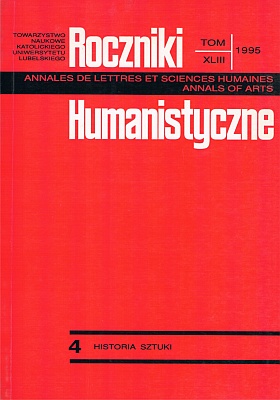Ikonografia Tadeusza Kościuszki − wybrane zagadnienia
Abstrakt
The paper discusses some aspects of forming an image of Tadeusz Kościuszko - the Polish national hero. Starting from the commissioned portraits and with a view to propaganda (e.g. Delanaux's copperplate according to E. Quenedey's drawing of 1793) to the great compositions whose climax was depicting the Commander-in-chief of the Insurrection in the so-called Racławice Panorama by J. Styka and W. Kossak (1894). Kościuszko's portraits form a clear cycle of presentations in line with a national and patriotic trend, so characteristic of the Polish art in the end of the 18th and 19th c. Researchers see in this trend a very important component of the so-called "religion of polonism" (T. Parnicki's term), a romantic reaction to the political captivity of the nation. The artists, following this trend, were gradually diverging from veristic portraits, when painting Kościuszko, toward paintings bearing an allegorical character (the earliest was the so-called The Grave of the Homeland by F. Smuglewicz and M. Stachowicz, portraits made by C. Josi, A. Oleszczyński and others.). Those allegories served to explain, as people thought, history directed by Providence, the expected end was supposed to be freeing Poland from captivity. Tens of oil canvasses, graphics, medals, monument projects etc. with an image of the winner in the battle of Racławice were not only to remind the hero's figure, who opposed with arms against the partitioning powers, but also to co-create the land of the patriotic-national collective imagination. The latter made Kościuszko almost a mythological hero, while historical facts connected with his biography were transformed into an interpretation of history not only of Poland but also Europe, an interpretation close to the philosophy of history.
Copyright (c) 1995 Roczniki Humanistyczne

Utwór dostępny jest na licencji Creative Commons Uznanie autorstwa – Użycie niekomercyjne – Bez utworów zależnych 4.0 Międzynarodowe.





